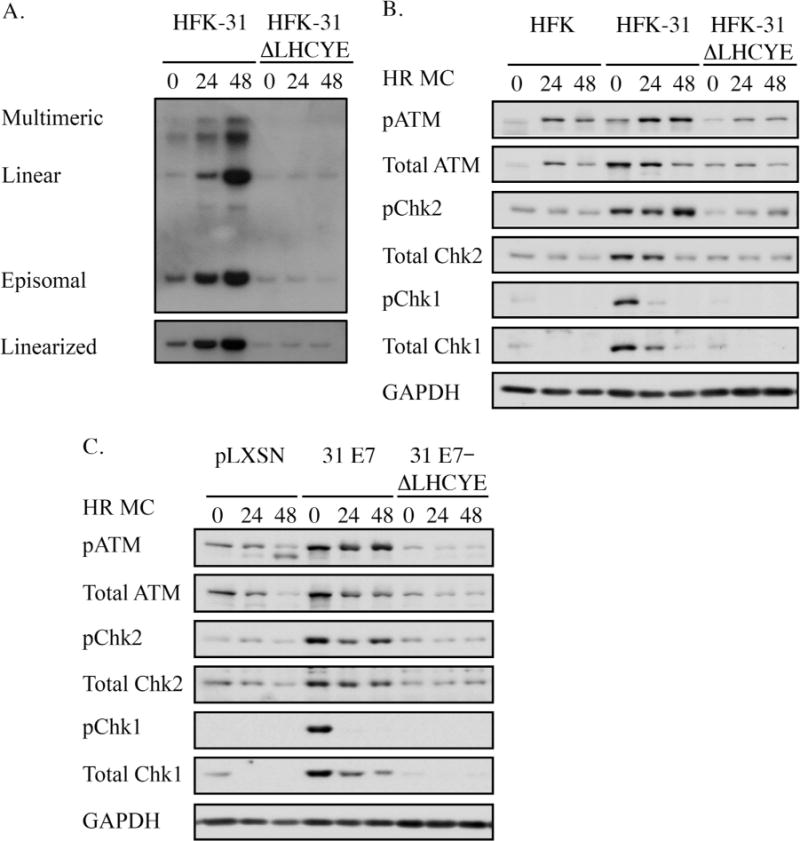Fig. 1.

The Rb binding domain of E7 is required for ATM and ATR activation in HPV31 positive and E7-expressing keratinocytes. (A) Southern blot analysis performed on DNA harvested at the indicated time points from human foreskin keratinocytes maintaining wild-type HPV31 genomes (HFK-31), as well as HFK-31 cells containing a mutation in the E7 Rb binding site (HFK-31 ΔLHCYE). DNA was digested with either BamH1, which does not cut the viral genome, or HindIII, which cuts the genome once. The HPV31 genome was used as a probe. (B) Western blot analysis was performed on lysates harvested from HFKs, HFK-31 cells, or HFK-31 ΔLHCYE cells. Lysates were harvested from undifferentiated cells (T0), as well as after 24 and 48hr differentiation in methylcellulose (MC). Primary antibodies used were phosphorylated ATM on Ser1981 (pATM), total ATM, phosphorylated Chk2 on Ser68 (pChk2), total Chk2, phosphorylated Chk1 on Ser345 (pChk1), and total Chk1. GAPDH served as a loading control. Shown are blots representative of five independent experiments across four HFK backgrounds. (C) Whole cell lysates were harvested from undifferentiated (T0) as well as differentiated (24, 48hr MC) HFKs stably transduced with either a retroviral control construct (pLXSN) or retroviral constructs expressing wild-type HPV31 E7 (pLXSN-31 E7), or HPV31 E7 containing a mutation in the Rb binding domain (pLXSN-31 E7 ΔLHCYE). Immunoblotting was performed as described in panel B. Western blots shown are representative of three independent experiments across two HFK backgrounds.
